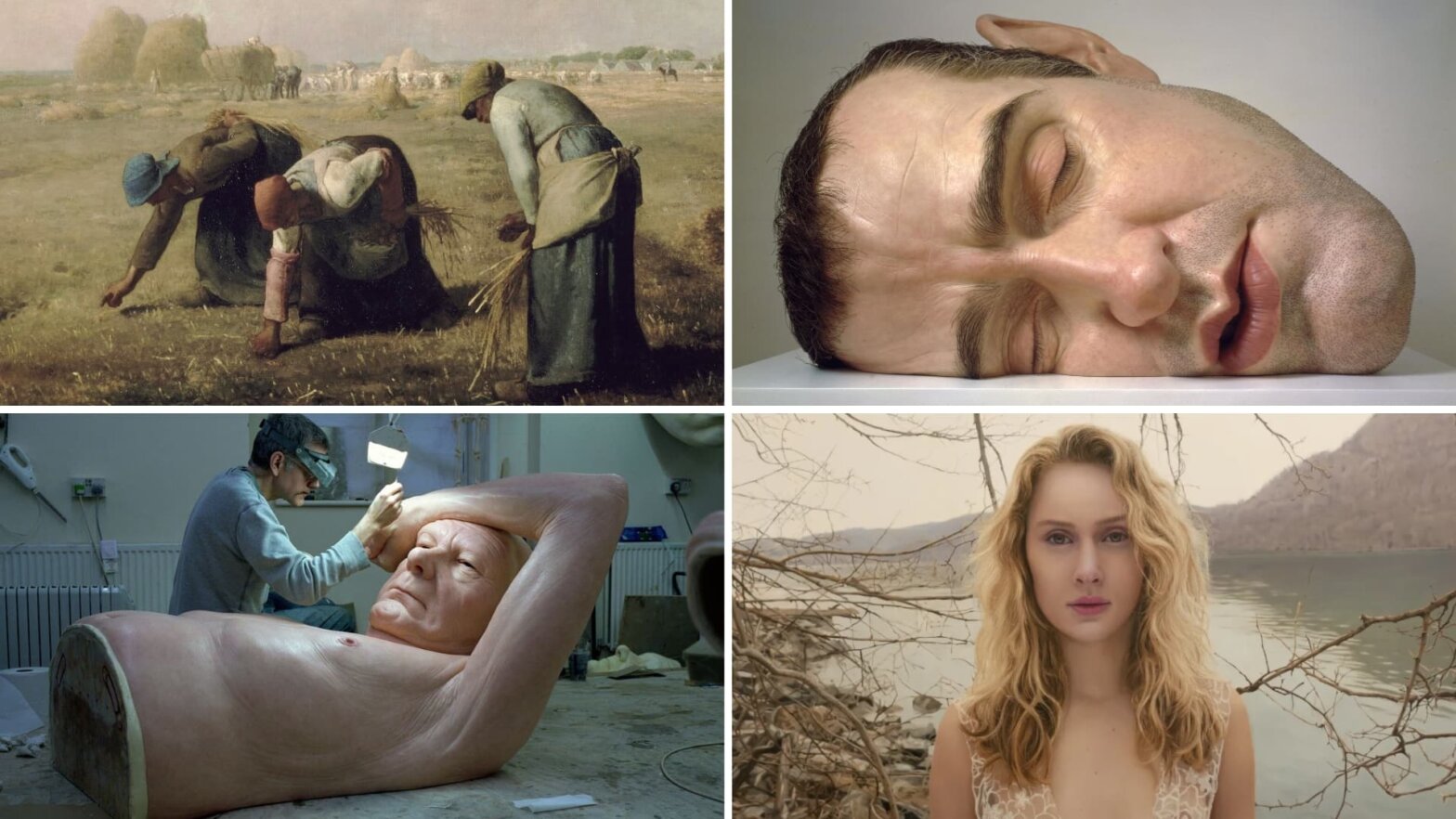We often describe a movie we’ve seen, a novel we’ve read, or even a video game we’ve played (such as Red Dead Redemption) based on how “realistic” it seems — how closely it hews to real life experiences or feelings. But movies, novels, and games are by their definition not real. They are fictional creations imagined by writers and filmmakers. So what, then, do we actually mean when we claim that something is realistic?
As with most things, it helps to first understand the origins of the Realism art period, which presaged the idea of Realism in literature, drama, and film. In this article, we define Realism as both a style and as a movement; explain its historical and contemporary purpose; and give examples of Realism painting and realism in cinema.
Realism Art Movement
First, let’s define Realism in art
The Realism movement is one of the key art periods in human history, during which artists engineered a profound shift in the way that art was created, defined, and conceptualized.
Here's a quick backstory before we get to the examples.
REALISM ART DEFINITION
What is Realism in Art?
The Realism art period was a stylistic and social movement that began in France in the mid-nineteenth century. The Realism movement rejected the artistic approach of the Romantic period that had preceded it, which glorified nature and heroic figures. Before Realism, painting and sculpture had been concerned with rendering Biblical and mythological figures that exalted the best of humanity. Human figures were presented as Classical Greek ideals, with perfect bodies and beautiful, unblemished faces.
Realism artists, on the other hand, began to paint human subjects as they really existed in all their flaws, suffering, and imperfections. They wanted to hold up “regular” people as worthy of artistic representation. The Realism movement grew out of the 1848 Revolution in France that established people’s “right to work” and focused on worker’s rights. In this way, it was as much a political as an aesthetic movement.
Realism Art Characteristics:
- Rejected Romantic ideals
- Represented subjects “as they were”
- Focused on everyday people, settings, and situations
- Responded to a new national emphasis on workers
Realism Art Movement
Romantic Art and Realism
The Realism artistic movement rejected Romanticism — the art, literature, music, architecture and philosophy movement which had preceded it in the first half of the 19th century.
As this video explains, Romanticism was a reaction to the birth of the modern world and processes such as industrialization, urbanization, and secularization.
Romanticism Preceded the Realism Movement
Famous painters of the Romantic period included Eugene Delacroix, whose masterpiece “Liberty Leading the People” (1830) embodies the Romantic ideals of heroism, suffering and the Classical Greek form. Many of the details are not realistic, but meant to be allegories for political ideas.
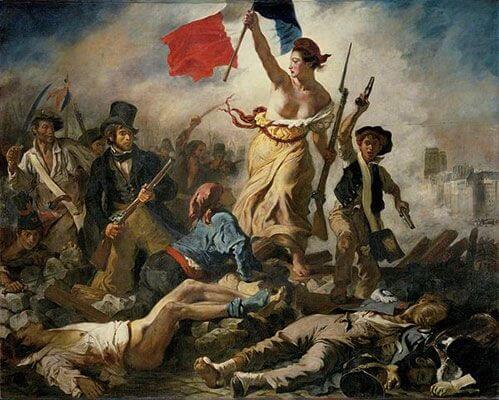
“Liberty Leading the People” • Eugene Delacroix
The contrast of light and dark in the figure is known as chiaroscuro, a lighting effect also used commonly in cinema.
Check out this tutorial for a more in-depth explanation.
What is Chiaroscuro? Cinematic Lighting 101 • Subscribe on YouTube
Another key artist of the Romantic period was the painter Caspar David Friedrich, known for his masterpiece “Wanderer above the Sea of Fog” (1818).
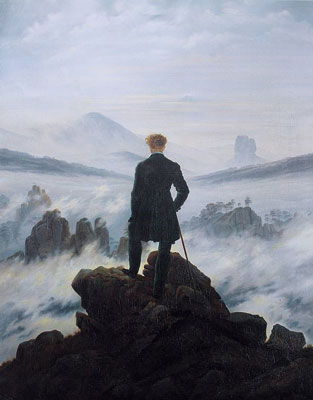
“Wanderer above the Sea of Fog" • Caspar David Friedrich
Friedrich’s painting embodies the Romantic ideal of the place of the individual within the majesty of the natural world.
What is Realism Painting
Realism Art Examples
As we defined above, Realism art characteristics included:
- Rejecting Romantic ideals
- Representing subjects “as they were”
- Focusing on everyday people, settings, and situations
- Responding to a new national emphasis on French workers
This video does a great job of summarizing key features, dates, and figures of the Realism art movement.
What is Realism in Art
One of the most important early Realism artists was Gustave Courbet, whose work, “The Stone Breakers” (1850) depicts many of the features of Realism painting, such as a focus on everyday workers and settings.
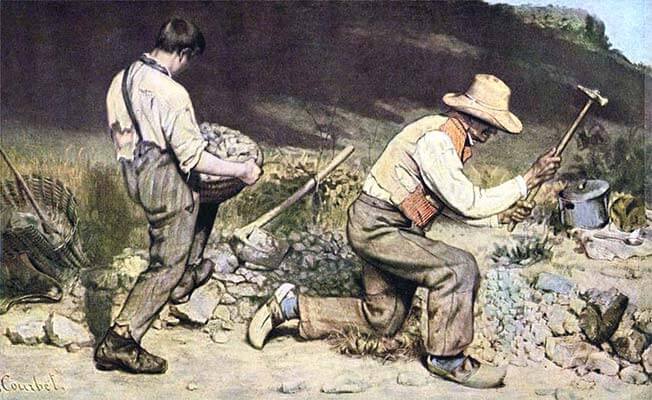
Realism Art Examples • “The Stone Breakers”
Another example in the same vein is “The Gleaners” (1857) by Jean-François Millet, which depicts women picking up loose grain in the field. Like “The Stone Breakers,” the painting is meant to depict both the hardships and the dignity of regular people at work, bringing empathy and recognition to their difficult station in life.
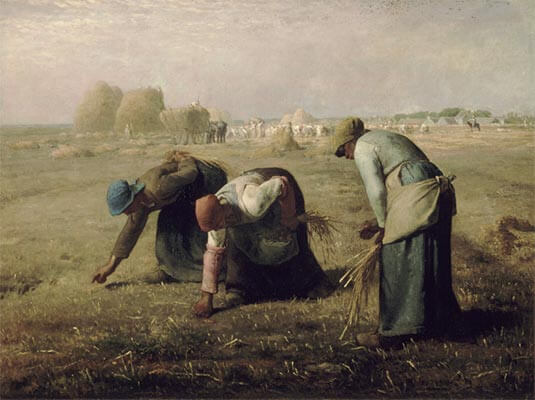
Realism Art Examples • “The Gleaners”
A famous example of American Realism painting is “The Gross Clinic” (1875) by the influential Philadelphia artist, Thomas Eakins. Because of its realistic depiction of blood and viscera on the operating table, the painting was originally considered too graphic for exhibition — a powerful testament to its Realism art characteristics.
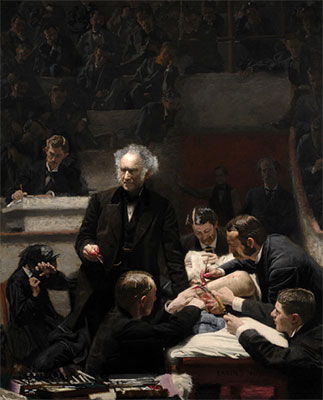
Art and Realism • “The Gross Clinic”
One final example is “Ploughing in the Nivernais” (1849), by Realism artist Rosa Bonheur, one of the most prolific female painters of the 19th century. Bonheur specialized in realistic depictions of animals.
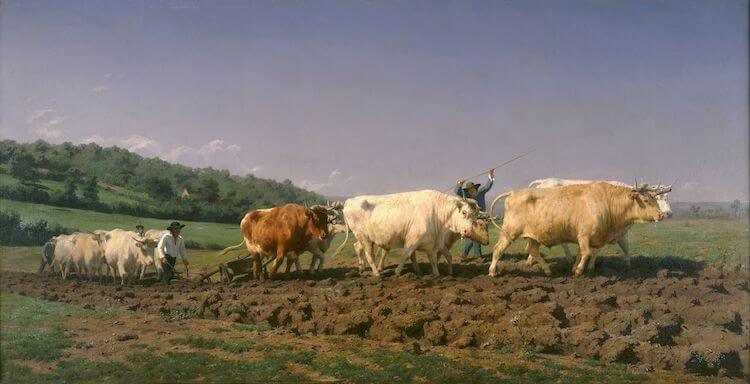
Define Realism in Art • “The Ploughing in the Nivernais”
Realism Art Definition
What is Realism in Art Post-1800s
Many 20th century artistic movements — including Abstract Expressionism, Cubism, and Surrealism, among others — rejected Realism in favor of new modes of depicting human experience and emotion. This video summarizes Abstract Expressionism and presents a number of prominent examples.
Abstract Expressionism in Painting
However, while many movements rejected Realism, other movements pushed 19th century Realism even further. Their aim was to use new techniques and technologies to make paintings look as real as possible, like photographs. These contemporary art movements include Photorealism and Hyperrealism.
Israeli painter Yigal Ozeri is considered a master of Photorealism. Painting on oil, Ozeri often takes women posing in nature as his subject:
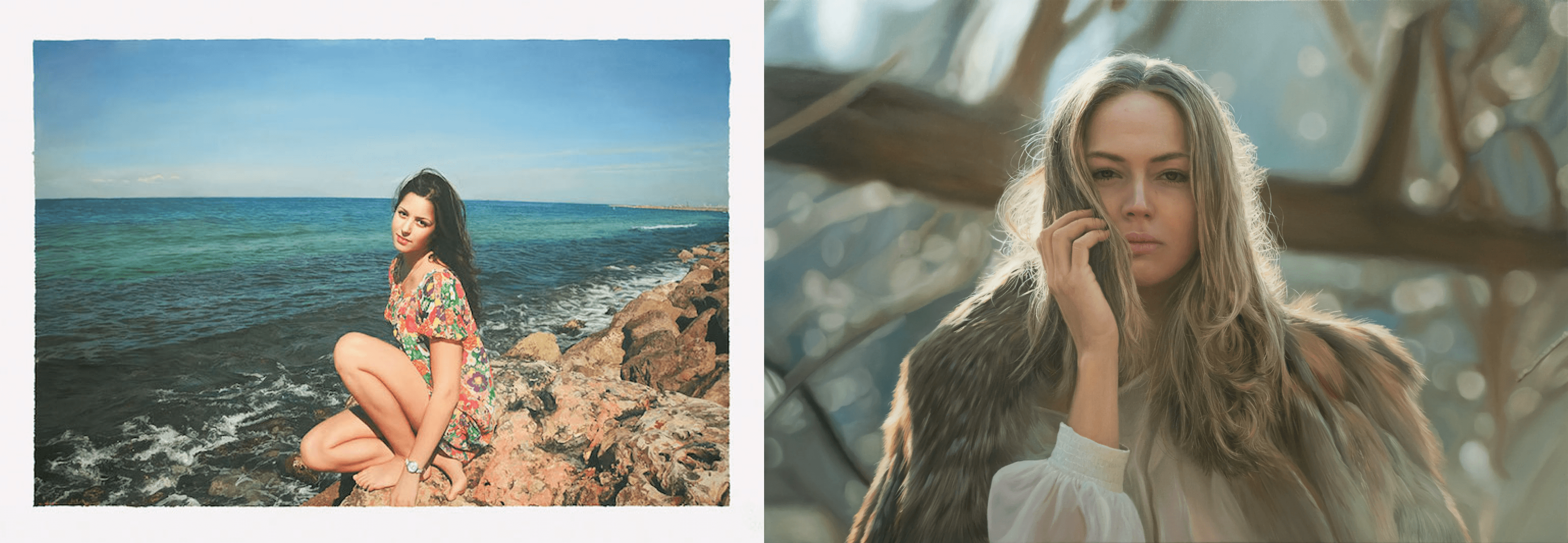
Art and Realism: Photorealism
Hyperrealism builds on Photorealism and Realism art characteristics. Photorealism aims to present a painting that looks exactly like a photograph. But Hyperrealism often combines realistic images with an element of something that is unreal but still looks real because of the techniques with which it has been rendered.
Hyperrealism tends to make more of a pointed statement about its subject and is not typically as literal a representation. Here are examples of Hyperrealism, by Ron Mueck and Johannes Wessmark:
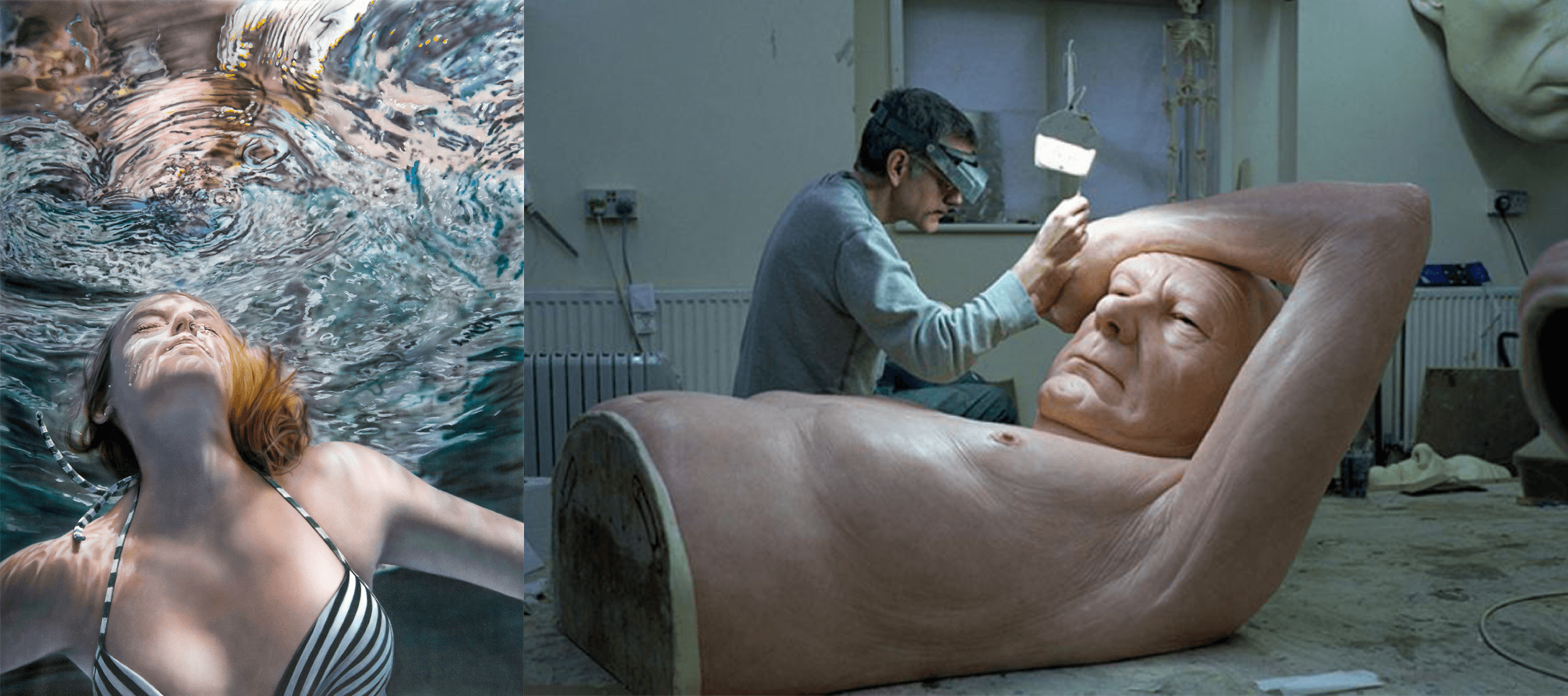
Realism Art Definition: Hyperrealism
In this video, the artist provides a tutorial on how to use drawing techniques to create Hyperrealism.
Creating Hyperrealism
Realism has evolved greatly since the 19th century, but it has the same basic philosophical approach — to convey subjects so that they look true to life. In the next section, we'll see how this same approach has been adopted in film.
What is Realism in Art Cinema
Realism in Cinema Movements
Realism took root in many art forms in the 19th and 2oth centuries beyond painting, as various movements emerged within literature, drama, and film.
As with painting, the expression of Realism in these arts was both aesthetic and ideological.
Realism in cinema can refer to a number of film modes and movements. But historically Realism movements have been a reaction against the artificiality and fantasy of commercial film eras that preceded them. As with Realism in painting, a historical shift has usually prompted the cinematic shift.
One of the most famous cinematic Realism movements is Italian Neorealism, a group of low-budget films shot on location in post-War Italy. These included films by Roberto Rossellini, Luchino Visconti, and Vittorio De Sica.
The historical shift was World War II and the end of Mussolini’s fascism in Italy. Neorealist films such as Ladri di Bicicletti (The Bicycle Thief), Roma Citta Aperta (Rome, Open City), and Ossessione were a reaction against Italy’s highly stylized fascist propaganda films. And their aim was to show the reality of poor and working class people through a new generation of filmmakers.
Italian Neorealism
Other famous film movements that have tried to present realistic scenarios of people, places, and eras include the French New Wave of the late 1950s and ‘60s, the New Hollywood movement of the early 1970s, and the late 1990s Danish film movement, Dogme 95.
A Brief History of Dogme 95
Related Posts
UP NEXT
What is Italian Neorealism?
We have explored the question of what is realism in art, and given examples of Realism in painting from the 19th and 20th centuries, as well as today. We have also briefly explored how Realism manifested in various cinema movements. Next, take a more thorough look at one of the most famous and important of those movements: Italian Neorealism.
Up Next: Italian Neorealism →
Showcase your vision with elegant shot lists and storyboards.
Create robust and customizable shot lists. Upload images to make storyboards and slideshows.
